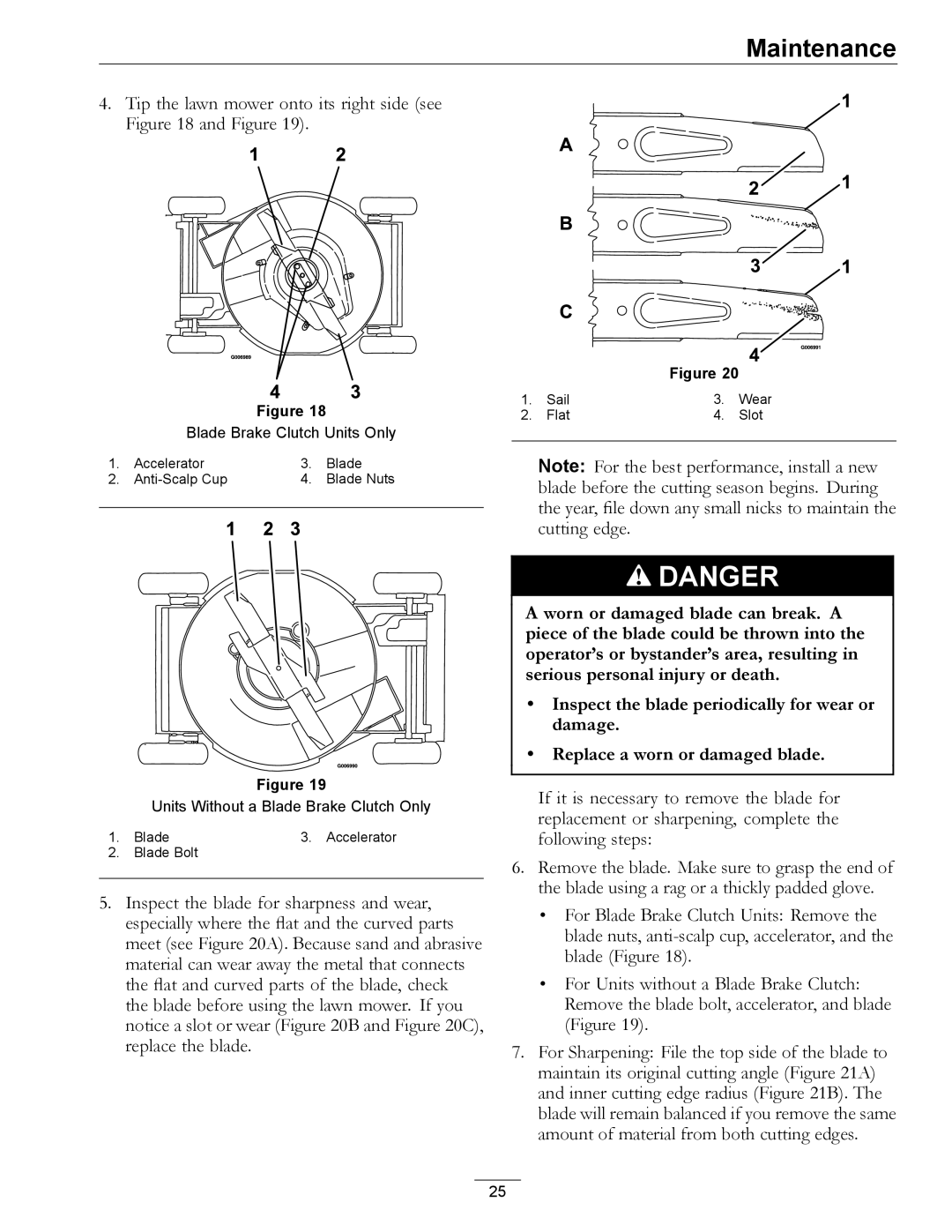
Maintenance
4. Tip the lawn mower onto its right side (see Figure 18 and Figure 19).
|
| Figure 18 |
|
| Blade Brake Clutch Units Only | ||
1. | Accelerator | 3. | Blade |
2. | 4. | Blade Nuts | |
|
|
|
|
|
| Figure 20 |
|
1. | Sail | 3. | Wear |
2. | Flat | 4. | Slot |
Note: For the best performance, install a new blade before the cutting season begins. During the year, file down any small nicks to maintain the cutting edge.
Figure 19
Units Without a Blade Brake Clutch Only
1. Blade | 3. Accelerator |
2.Blade Bolt
5.Inspect the blade for sharpness and wear, especially where the flat and the curved parts meet (see Figure 20A). Because sand and abrasive material can wear away the metal that connects the flat and curved parts of the blade, check the blade before using the lawn mower. If you notice a slot or wear (Figure 20B and Figure 20C), replace the blade.
![]() DANGER
DANGER
A worn or damaged blade can break. A piece of the blade could be thrown into the operator’s or bystander’s area, resulting in serious personal injury or death.
•Inspect the blade periodically for wear or damage.
•Replace a worn or damaged blade.
If it is necessary to remove the blade for replacement or sharpening, complete the following steps:
6.Remove the blade. Make sure to grasp the end of the blade using a rag or a thickly padded glove.
•For Blade Brake Clutch Units: Remove the blade nuts,
•For Units without a Blade Brake Clutch: Remove the blade bolt, accelerator, and blade (Figure 19).
7.For Sharpening: File the top side of the blade to maintain its original cutting angle (Figure 21A) and inner cutting edge radius (Figure 21B). The blade will remain balanced if you remove the same amount of material from both cutting edges.
25
